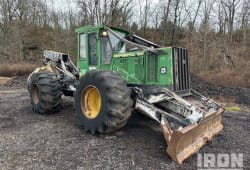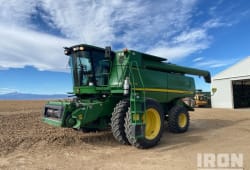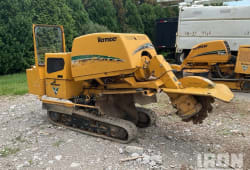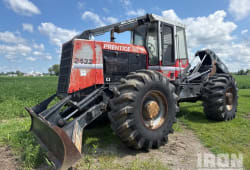Optimizing Timber Operations: A Complete Handbook on Forestry Equipment
13 Lectura mínima
)
marzo 31, 2024
Forestry equipment plays a pivotal role in the management and utilization of forest resources, facilitating various tasks ranging from tree harvesting to timber transportation. As the demand for wood products continues to rise, the need for efficient and reliable forestry equipment becomes increasingly pronounced. In this comprehensive guide, we delve into the world of forestry equipment, exploring its significance, types, selection criteria, maintenance practices, safety considerations, and future prospects.
Introduction to Forestry Equipment
Forestry equipment encompasses a diverse array of machinery and tools designed to aid in the cultivation, harvesting, and processing of timber. From chainsaws and felling equipment to advanced harvesters and forwarders, these specialized tools are instrumental in streamlining forestry operations and maximizing productivity. The forestry equipment market caters to a wide range of applications, including commercial logging, reforestation efforts, wildfire management, and sustainable land management practices.
Essential Forestry Equipment for Efficient Operations
Chainsaws and Felling Equipment
Chainsaws are perhaps the most recognizable tools in forestry, utilized for felling trees and cutting them into manageable sections. Modern chainsaws come equipped with advanced features such as ergonomic designs, anti-vibration systems, and automatic chain lubrication mechanisms, enhancing user comfort and operational efficiency.
Harvesters and Forwarders
Harvesters are specialized machines designed for the mechanized felling, delimbing, and bucking of trees. These versatile units integrate cutting-edge technology to optimize harvesting processes while minimizing waste and environmental impact. Forwarders, on the other hand, are utilized for transporting felled timber from the forest to collection points or processing facilities, utilizing innovative loading and stacking mechanisms for maximum efficiency.
Skidders and Loaders
Skidders play a crucial role in timber extraction by hauling logs from the forest to designated landing areas using cable or grapple systems. Loaders, meanwhile, are employed for loading timber onto trucks or trailers for transportation to sawmills or other processing facilities. Both skidders and loaders are available in a variety of configurations to suit different terrain and operational requirements.
Mulchers and Chippers
Mulchers and chippers are essential for vegetation management and biomass processing in forestry operations. Mulchers are utilized for shredding brush and small trees, reducing them to mulch or biomass for land reclamation or bioenergy purposes. Chippers, on the other hand, are used to chip larger branches and tree trunks into uniform-sized wood chips for use in pulp and paper production, landscaping, or renewable energy generation.
Factors to Consider When Choosing Forestry Equipment
Selecting the right forestry equipment is a critical decision that can significantly impact the success and efficiency of forestry operations. Several key factors should be taken into account during the equipment procurement process:
Size and Scale of Operations
The scale of forestry operations, including the size of the forested area, the volume of timber to be harvested, and the frequency of harvesting activities, will influence the type and capacity of equipment required.
Terrain and Environmental Factors
The topography, soil conditions, and accessibility of the forested area will dictate the type of equipment that can be effectively utilized. Equipment with specialized features such as track systems, articulated frames, or low ground pressure tires may be necessary for challenging terrain conditions.
Budget Considerations
Cost is a significant consideration when investing in forestry equipment, encompassing not only the initial purchase price but also ongoing maintenance, repair, and operating costs. It is essential to strike a balance between upfront investment and long-term value to ensure a favorable return on investment.
Maintenance and Support Services
Regular maintenance and timely repairs are essential for prolonging the lifespan and maximizing the performance of forestry equipment. Access to reliable support services, including spare parts availability, technical assistance, and training programs, is crucial for minimizing downtime and optimizing operational efficiency.
Benefits of Investing in Quality Forestry Equipment
Investing in high-quality forestry equipment offers a myriad of benefits for forest owners, operators, and stakeholders:
Increased Productivity and Efficiency
Modern forestry equipment is engineered to streamline operations, reduce manual labor, and enhance productivity levels. Advanced features such as automated cutting systems, GPS-guided navigation, and real-time data monitoring enable operators to accomplish tasks more quickly and accurately.
Reduced Operational Costs
Efficient equipment utilization translates to lower fuel consumption, reduced labor expenses, and decreased maintenance costs over time. By investing in durable, fuel-efficient machinery, forest owners can achieve substantial long-term savings and improve overall profitability.
Improved Safety for Workers
Safety is paramount in forestry operations, where workers are exposed to various hazards such as falling trees, heavy machinery, and rough terrain. State-of-the-art safety features, including roll-over protection structures (ROPS), falling object protective structures (FOPS), and proximity warning systems, help mitigate risks and ensure a safe working environment for personnel.
Long-Term Reliability and Durability
Quality forestry equipment is built to withstand the rigors of heavy-duty use in challenging environments, offering superior durability and longevity compared to cheaper, less robust alternatives. By investing in reliable machinery from reputable manufacturers, forest owners can minimize equipment downtime and maximize operational uptime.
Trends and Innovations in Forestry Equipment
The forestry equipment industry is continually evolving, driven by technological advancements, changing market dynamics, and shifting environmental priorities. Several notable trends and innovations are shaping the future of forestry equipment:
Advancements in Technology
The integration of advanced technologies such as artificial intelligence (AI), machine learning, and Internet of Things (IoT) connectivity is revolutionizing forestry equipment design and functionality. Smart sensors, telemetry systems, and predictive analytics enable real-time monitoring of equipment performance, predictive maintenance scheduling, and data-driven decision-making.
Sustainable Forestry Practices
There is growing emphasis on sustainability and environmental stewardship within the forestry sector, driving demand for eco-friendly equipment solutions. Innovations such as hybrid powertrains, electric drivetrains, and biofuel compatibility are reducing carbon emissions, minimizing ecological footprint, and promoting responsible forest management practices.
Integration of Automation and Robotics
Automation and robotics are reshaping traditional forestry operations, offering unprecedented levels of precision, efficiency, and safety. Autonomous drones, robotic harvesters, and unmanned aerial vehicles (UAVs) are increasingly used for tasks such as aerial surveying, tree mapping, and precision logging, augmenting human labor and enhancing operational outcomes.
Environmental Impact Considerations
Forestry equipment manufacturers are actively exploring ways to minimize the environmental impact of their products and operations. This includes initiatives such as sustainable materials sourcing, energy-efficient manufacturing processes, and end-of-life recycling programs, aimed at reducing resource consumption, waste generation, and ecological degradation.
Maintenance and Care Tips for Forestry Equipment
Proper maintenance and care are essential for ensuring the optimal performance, longevity, and safety of forestry equipment. Here are some practical tips for maintaining your forestry machinery:
Regular Inspections and Servicing
Schedule routine inspections and maintenance checks to identify any potential issues or defects before they escalate into costly repairs or breakdowns. Follow manufacturer recommendations for service intervals, fluid changes, and component replacements to keep your equipment running smoothly.
Proper Cleaning and Lubrication
Keep your forestry equipment clean and well-lubricated to prevent corrosion, contamination, and premature wear. Use appropriate cleaning agents and lubricants recommended by the manufacturer, paying special attention to critical components such as chains, bearings, hydraulic cylinders, and fuel systems.
Storage and Shelter Recommendations
Store your forestry equipment in a dry, sheltered environment when not in use to protect it from the elements and minimize exposure to moisture, sunlight, and temperature fluctuations. Consider investing in purpose-built storage facilities or equipment covers to safeguard against rust, degradation, and theft.
Troubleshooting Common Issues
Familiarize yourself with common maintenance tasks and troubleshooting procedures to address minor issues promptly and effectively. Consult the equipment manual or seek advice from qualified technicians if you encounter any unfamiliar problems or warning signs during operation.
Safety Precautions When Operating Forestry Equipment
Safety should always be the top priority when operating forestry equipment, given the inherent risks and hazards associated with the industry. Here are some essential safety precautions to observe:
Training and Certification Requirements
Ensure that all personnel operating forestry equipment receive adequate training and certification to perform their duties safely and effectively. Offer comprehensive training programs covering equipment operation, maintenance procedures, emergency protocols, and hazard awareness.
Personal Protective Equipment (PPE)
Require all workers to wear appropriate personal protective equipment (PPE) when operating forestry equipment or working in proximity to active logging sites. This may include items such as hard hats, safety glasses, hearing protection, high-visibility clothing, gloves, and steel-toed boots.
Emergency Protocols and Communication
Establish clear emergency protocols and communication procedures to respond effectively to accidents, injuries, or equipment malfunctions. Provide workers with access to emergency contact information, first aid supplies, fire extinguishers, and evacuation routes, and conduct regular drills to reinforce safety protocols.
Hazard Awareness and Mitigation Strategies
Encourage workers to remain vigilant and proactive in identifying potential hazards and implementing mitigation strategies to minimize risks. Conduct thorough site assessments, hazard analyses, and safety briefings before commencing any forestry operations, and address any safety concerns promptly.
Environmental Impact of Forestry Equipment
Forestry equipment plays a significant role in shaping the environmental footprint of forestry operations, influencing factors such as carbon emissions, habitat conservation, and ecosystem integrity. By adopting sustainable forestry practices and utilizing eco-friendly equipment solutions, the industry can mitigate its environmental impact and promote long-term ecological resilience.
Sustainable Forestry Management Practices
Implement sustainable forestry management practices that prioritize biodiversity conservation, soil health, water quality, and carbon sequestration. Utilize selective logging techniques, reforestation initiatives, and habitat restoration efforts to minimize ecological disturbance and enhance ecosystem resilience.
Mitigation of Carbon Emissions
Minimize carbon emissions associated with forestry operations by optimizing equipment efficiency, reducing fuel consumption, and implementing alternative energy solutions. Explore opportunities for carbon offsetting, renewable energy generation, and carbon sequestration projects to mitigate the environmental impact of timber harvesting activities.
Habitat Preservation and Restoration Efforts
Protect and restore critical habitats for native wildlife species, including endangered or threatened species, through habitat preservation agreements, wildlife corridors, and ecosystem restoration projects. Consider the ecological implications of forestry operations and prioritize conservation efforts to maintain biodiversity and ecological balance.
Compliance with Regulatory Standards
Adhere to regulatory standards and industry best practices governing forestry operations, including environmental regulations, land use permits, and wildlife protection laws. Engage with regulatory agencies, conservation organizations, and local stakeholders to ensure compliance with legal requirements and promote responsible forest management practices.
Case Studies: Successful Applications of Forestry Equipment
Real-world case studies provide valuable insights into the practical applications and benefits of forestry equipment in various contexts:
Case Study 1: Mechanized Harvesting in Commercial Logging Operations
A commercial logging company invested in state-of-the-art harvesting equipment, including automated harvesters and forwarders, to increase operational efficiency and productivity. By mechanizing timber harvesting and extraction processes, the company was able to significantly reduce labor costs, minimize environmental impact, and optimize resource utilization.
Case Study 2: Biomass Processing for Renewable Energy Generation
A forestry cooperative implemented a biomass processing facility equipped with advanced mulching and chipping equipment to convert forest residues into renewable energy sources. By utilizing wood chips and biomass pellets as feedstock for bioenergy production, the cooperative reduced reliance on fossil fuels, mitigated greenhouse gas emissions, and generated additional revenue streams from sustainable forestry practices.
Case Study 3: Precision Logging and Habitat Conservation
An environmental conservation organization utilized precision logging techniques and low-impact forestry equipment to selectively harvest timber while preserving sensitive habitats and wildlife corridors. By integrating ecological considerations into forestry operations, the organization achieved a harmonious balance between timber extraction and habitat conservation, ensuring the long-term sustainability of forest ecosystems.
Case Study 4: Community-Based Forestry Management Initiatives
A community forestry association collaborated with local stakeholders, indigenous communities, and forestry experts to develop sustainable forest management plans and implement community-based forestry practices. By empowering local communities to actively participate in decision-making processes and resource management activities, the association fostered social cohesion, economic empowerment, and environmental stewardship within the community.
Future Outlook for Forestry Equipment Industry
The forestry equipment industry is poised for significant growth and innovation in the coming years, driven by technological advancements, evolving market trends, and environmental imperatives. Several key factors are shaping the future outlook for the forestry equipment industry:
Anticipated Technological Advancements
Rapid advancements in technology, including robotics, automation, and digitalization, are expected to revolutionize forestry equipment design, functionality, and performance. Future innovations may include autonomous harvesting systems, drone-assisted reforestation initiatives, and predictive maintenance solutions, enhancing operational efficiency and sustainability.
Market Growth Projections
The global forestry equipment market is forecasted to expand steadily in response to increasing demand for wood products, urbanization, infrastructure development, and renewable energy investments. Emerging markets in Asia-Pacific, Latin America, and Africa are expected to drive growth opportunities for forestry equipment manufacturers, fueled by rising timber consumption and expanding forestry sector investments.
Regulatory Changes and Challenges
The forestry equipment industry will face regulatory challenges and compliance requirements related to environmental protection, occupational safety, and land use regulations. Manufacturers will need to adapt to evolving regulatory frameworks, emission standards, and sustainability mandates while maintaining competitiveness and profitability in the global marketplace.
Opportunities for Innovation and Expansion
The convergence of forestry, technology, and sustainability presents unprecedented opportunities for innovation and expansion within the forestry equipment industry. Market players are exploring new business models, strategic partnerships, and product diversification strategies to capitalize on emerging trends such as carbon markets, ecosystem services, and circular economy principles.
Conclusion
In conclusion, forestry equipment plays a vital role in enabling efficient, sustainable, and responsible management of forest resources worldwide. From chainsaws and harvesters to mulchers and chippers, these specialized tools empower forest owners, operators, and stakeholders to maximize productivity, minimize environmental impact, and promote long-term ecological resilience. By investing in quality equipment, adhering to best practices, and embracing innovation, the forestry industry can navigate current challenges and unlock new opportunities for growth, prosperity, and environmental stewardship.
Unique FAQs
What are the key factors to consider when purchasing forestry equipment?
When purchasing forestry equipment, it's essential to consider factors such as the scale of operations, terrain conditions, budget constraints, and maintenance requirements. Additionally, environmental considerations, regulatory compliance, and technological advancements should also be taken into account to ensure optimal equipment selection and performance.
How can I ensure the safety of workers when operating forestry equipment?
Ensuring the safety of workers when operating forestry equipment involves comprehensive training, adherence to safety protocols, provision of personal protective equipment (PPE), and regular equipment inspections and maintenance. Employers should prioritize safety awareness, hazard identification, and emergency preparedness to minimize the risk of accidents or injuries in forestry operations.
What are some sustainable forestry practices that can minimize environmental impact?
Sustainable forestry practices aim to balance the economic, social, and environmental dimensions of forest management, incorporating principles such as selective logging, reforestation, habitat conservation, and carbon sequestration. By prioritizing biodiversity conservation, soil health, and water quality, sustainable forestry practices can minimize ecological impact and promote long-term forest resilience.
How can advancements in technology enhance forestry operations?
Advancements in technology, such as automation, robotics, and digitalization, have the potential to revolutionize forestry operations by improving efficiency, accuracy, and safety. Smart sensors, GPS-guided navigation, and predictive analytics enable real-time monitoring, optimization, and decision-making, while autonomous drones and robotic systems can augment human labor and mitigate operational risks.
What are the emerging trends shaping the future of the forestry equipment industry?
The forestry equipment industry is experiencing a paradigm shift driven by trends such as sustainability, digitalization, and circular economy principles. Key emerging trends include the integration of advanced technologies, adoption of eco-friendly equipment solutions, expansion into new markets, and collaboration across value chains to address complex challenges and unlock growth opportunities.

Javier Bocanegra is Boom & Bucket's Technical Resolutions Lead, drawing on 10+ years in automotive and heavy equipment to diagnose issues, resolve complex post-sale cases, and keep machines - and customers - running smoothly. A certified heavy-equipment specialist, he's known for meticulous inspections and hands-on expertise across mechanical, electrical, and hydraulic systems. Based in Sacramento, Javier partners closely with buyers, vendors, and our field teams to deliver reliable outcomes and uphold our standards for safety and trust.














